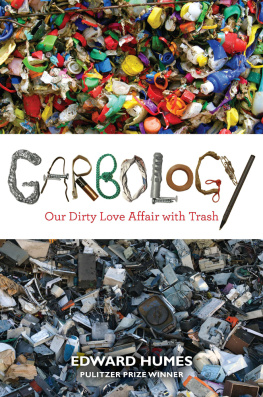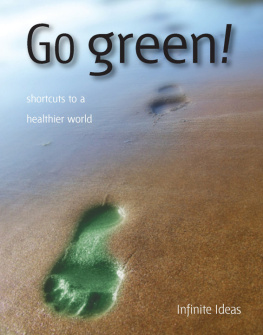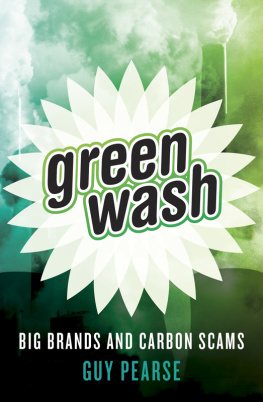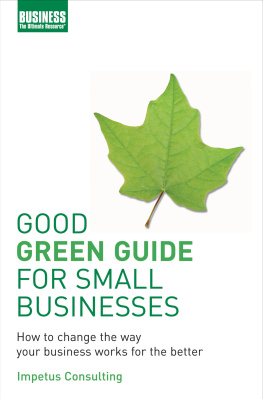Force of Nature
The Unlikely Story of Wal-Marts Green Revolution
Edward Humes

The world can certainly save itself, butonly if we pause from our relentless competition.... Thebarriers are in our limited capacity to cooperate, not in our stars.
J EFFREY D. S ACHS , CommonWealth
Capital isnt scarce. Vision is.
S AM W ALTON
Contents
The Confluence
Stanislaus County, California
T he three rafts glide into the green waters of Merals Pool, gathering speed in the strong, silt-free flow of the lower Tuolumne, one of the most pristine and best protected river runs in the world. Cold enough to burn from Sierra snowmelt even in June, the Tuolumne River flows for the next eighteen miles through a green, steep-walled gorge. There are no roads in sight, no traffic noise, no wires, signs, or towersjust a few crumbling prospectors shacks, their gray boards sprung and gapped like bad teeth, and the rock and mortar remnants of a century-old mining trail planted in the bony incline by Chinese laborers.
Bundled in the bright armor of wetsuits, helmets, and bulky orange life vests, the rafters brace themselves as the quiet of the pool gives way to the hissing, slapping roar of water striking thickets of boulders. The first set of rapids, Rock Garden, is a mere tenth of a mile from the put-in, a quick baptism for the passengers perched on the tubular sides of the inflatable rafts and leaning tentatively out over their paddles. The river guides bark commandsleft, right, back, stopand the paddlers struggle to react before the next directive is shouted out. Most have never run any sort of white water before, much less such a treacherous Level IV cascade. These rapids demand that every paddler in the boat act in concert or risk being tossed into the foam and rocks.
One by one, the rafts enter Rock Garden, spray flying, gouts of water sluicing over the sides to soak the riders, who hoot and gasp and laugh like lunatics at the mixed sensations of speed, roller coaster dips, and chilly water. When the rafts pop into the clear and no thrown riders are seen bobbing in the water, the crews raise their paddles and make clattering high fives. Then the guides tell them to prepare for the next run, Nemesis, just a half mile off and coming up fast. By the time they reach it, nearly every paddle is beating through the water in an easy, matching rhythm.
The guides will tell you theres a kind of magic to this. Jib Ellison has built a career around it. The river guide turned corporate consultant turned sustainability guru uses the churning white water and the teamwork it fosters to make adversaries into unlikely allies. For this three-day event in the summer of 2009, he has drawn leaders of some of Americas most powerful and influential companies to the rafts or the follow-up conference in Berkeley: Nike, Sony, Barclays, Hewlett-Packard, Microsoft, Waste Management (the nations biggest garbage collector), and Dairy Management, Inc. (i.e., most of Americas milk cows). More than half of them had hired Ellison to help them go green. Theres also the Patagonia clothing company on board, small compared to the others but esteemed as a green business leader (The Coolest Company on the Planet, according to Fortune magazine). Then theres the big draw, Ellisons marquee client: Wal-Mart, the worlds largest corporation, mover of markets and monument to consumption, whose buying decisions can make or break businesses and shift the course of whole industriesa company so big that when it unplugs the lights inside its employee break room vending machines to lower carbon emissions, it saves $1.5 million in electricity a year. The leaders at Patagonia once swore theyd never do business with the Wal-Mart behemoth, but now here they are, on the river together, contemplating a partnership of a most unusual sort.
Finally, there is a select group of environmentalists, academics, and activists on board whom the corporate executives would have studiously avoided in years past. But after they row together all day, then crack beers around the campfire that night, they are in a position to find more common ground than they imagined, which is a good thing, given the daunting purpose behind this trip. They have assembled to plot what could be the next industrial revolutionthe one in which the pursuit of profit and the protection of planet stop being mutually exclusive and start being one and the same.
This has been Jib Ellisons mantra for years: businesses should brave such waters not simply because greening the factory or the supply chain is good for the image or because reducing waste, carbon emissions, and the use of toxic materials and fuels is the right thing to do. Rather, he says, businesses should strive to become sustainable because it will bolster their bottom lines. The most sustainable business, the cleanest, most energy-efficient, least wasteful company, will have the competitive advantagenot just in a distant, utopian future but now. And if you accept that proposition, the key question of our age is not if business will obey the laws of nature but when and how and on whose terms. Will you innovate and lead? Or will you wait for the competitionor the courts or Congressto compel you to follow someone elses vision? As with so many other business imperatives, Ellison argues, the first movers will win. They will be in the best position to define what a sustainable business looks and acts like.
This idea is enticing enough (or scary enough) to get some of the busiest corporate executives to disappear with a bunch of environmentalists on a river in northern California for three days. No assistants, no conference rooms, no BlackBerrys, no PowerPoint decksjust a wild river as backdrop and prod. They represent huge global brands with huge global footprints, billions of dollars in revenues, hundreds of millions of customers, countless tons of waste generated and fuel consumed. Here, for a few precious days, they will do what river guides do year-round as they chase the rafting season from hemisphere to hemisphere and expedition to expedition, living off the grid and in the momentliving the dream, the guides call it. Or, in this case, allowing themselves to dream of a new way of doing business.
The companies represented here have all accepted, more or less, the proposition that there is a business case for sustainabilitythat making greener products, and even greening whole companies, can enhance opportunity and profit. This combination river trip and high-level meeting, which Ellisons company, Blu Skye Sustainability Consulting, has dubbed the Confluence, is about what comes next. Can whole supply chains, whole industries, and whole business sectors become sustainablenot because of some onerous regulatory pressure but because its just better business? And can competitors figure out a way to cooperate, to share data and discoveries, in order to accomplish such a transformation?
Driving these questions, to the surprise of many of those in the rafts, is one of the worlds most traditionally secretive, go-it-alone companies: Wal-Mart.
Since 2005, Wal-Mart has become an object of fascination for business leaders trying to figure out exactly what sustainability means and for environmentalists who know what it is but cant get anyone to listen. Wal-Mart of late has embraced sustainability in such a big and fundamental way that it has surprised its critics, its admirers, its partners, its investors, and its own leadership. Renewable energy, zero waste, support for climate legislation, reduced packaging, and partnerships with environmental groupsthese are the sorts of things Wal-Mart has been focusing on. Wal-Marts CEO has declared that becoming greener is now a core business proposition for the company and, by extension, for its 100,000 suppliers. He got started in this direction for one reason: Jib Ellison persuaded him to do it.
Next page














